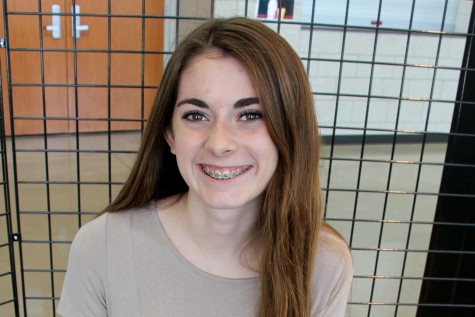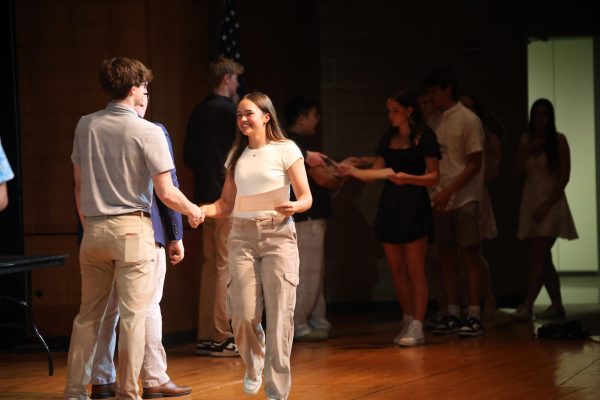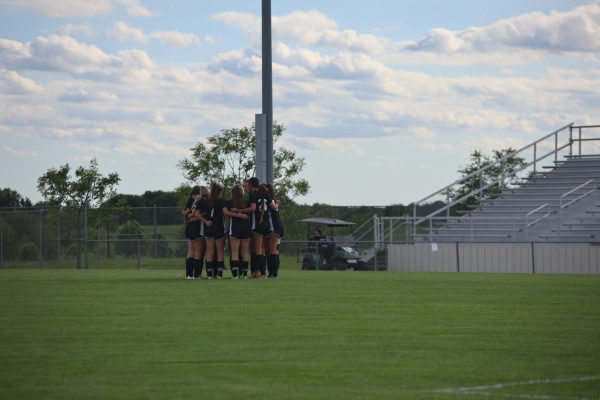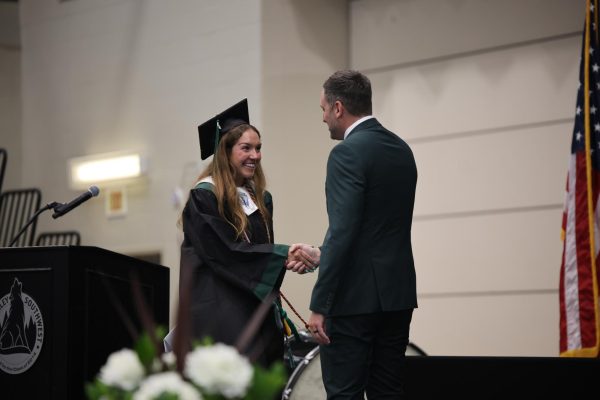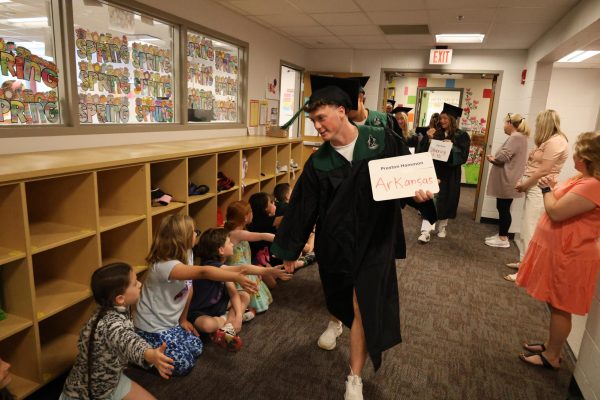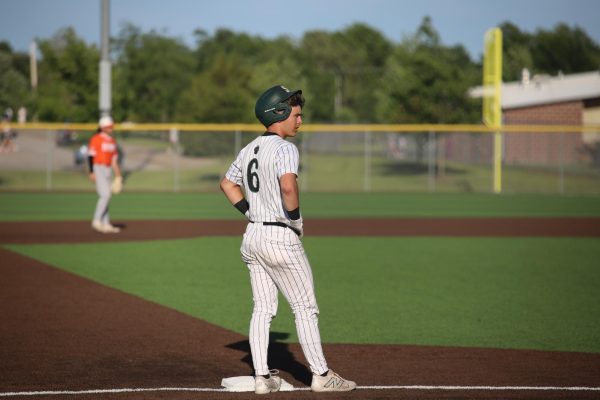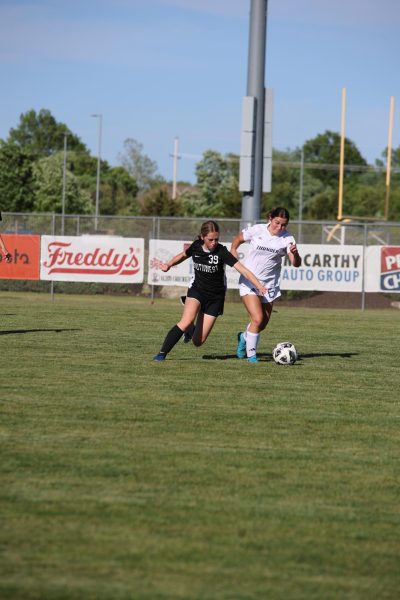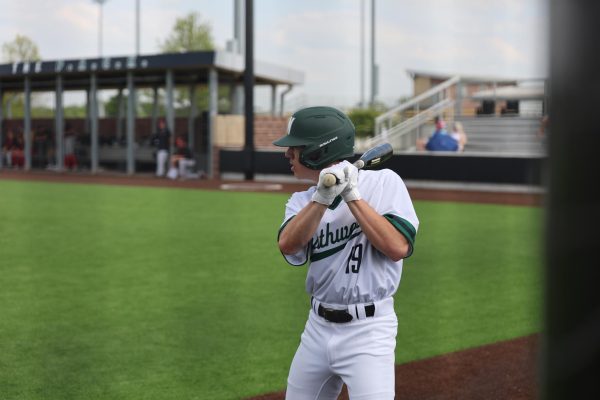How students transfer from a high school to a collegiate sport
Junior Rilynne Like steps on the court for basketball practice, exhausted from completing seven strenuous hours of school. As she begins to focus, she realizes she needs to put the thoughts of school behind her and mentally prepare to better herself and her team. After practice, she retreats to her home to complete the long list of homework awaiting her arrival. For Like and other athletes preparing to transition from high school to college athletics, this is merely a normal day.
Like estimates the total amount of work put in for basketball alone is around 15 hours per week. She has an average of six practices every week, each lasting two hours. On the weekends, Like frequently completes four hours of extra workouts. In addition, she squeezes in an athletic training session whenever her schedule allows it. With such a busy schedule, Like has had to learn to manage her day-to-day life.
“It makes me really tired having to balance all of it,” Like said. “I have to make sure I have a certain amount of sleep, or I just shut down and it gets really tiring.”
Effective time management allows Like to stay on top of things and not fall behind. She has learned to utilize her extra time efficiently and work ahead, preparing to shorten homework and studying time due to games or practice. Her passion gives her the motivation she needs to continue with her busy schedule. Like started playing basketball in first grade and loved it ever since.
“When you’re young, it’s kind of hard to decide if you really love it, but I loved it,” Like said. “It was awesome.”
As a kid, her basketball career wasn’t nearly as serious as it is now; today, as she has grown along with her skills, her in-practice ideals have changed. Her purpose has developed to wanting to progressively get better and improve her skills. Like hopes her hard work in and out of practice will prepare her for college-level athletics. She has had instances in which colleges will show interest and then back off right away, which has brought her down mentally. While preparing for this higher level of competition, Like has found her height challenging. According to slate.com, the average height of a WNBA player is just under six feet, yet Like stands at a below-average height of 5’5”.
“It’s hard being as short as I am and playing against girls who are quicker, faster and taller than me,” Like said. “[I’ve learned] that I have really had to overcome [that] and make sure I have an advantage of quickness and explosive moves.”
Like is prepared to dedicate her time to the sport she loves. Overcoming the obstacles set in her path has pushed Like to succeed. The hard work she has put in over the years has paid off in the form of a full-ride scholarship to University of Missouri-Kansas City.
“I really like the competitiveness because I get really into the games, but I really like that it is a team-oriented sport and you have to work together for an end goal,” Like said. “The different pieces that every player offers to it and they all work together to get you that end goal.”
For Like, basketball is everything. Her willingness to put in as much work as possible is now paying off and giving her the chance to play basketball after high school, at a college that is right for her. After recently talking to a student at her soon-to-be college, Like said that students shouldn’t pick a college based on the coaches because that can change; they should choose a college that can help them academically. Like believes she found that college, and is lucky to have the opportunity to be a part of the athletic program additionally. She said that getting to a college sport takes more than playing well — it takes good grades, a sufficient GPA and an average (or better than average) ACT score.
Planning to do something with nursing in college along with her basketball career, Like perseveres through school work and studying. Like said she wishes she could start college right now, but she knows that she has one year left to improve before continuing to a college sport.
“I don’t know what my life would be like without basketball, to be completely honest,” Like said. “I’ve spent most of my life focusing on this, and I have sacrificed doing things with friends, so I can’t imagine life without it.”
With their commitment to their sports, student athletes find themselves making many sacrifices to ensure their success. Preparing for college athletics requires work in and out of the normal practice schedule. According to usatoday.com, NCAA rules say coaches can take only 20 hours per week of their players’ time, regardless of the sport. However, most students choose to work outside of required practice hours to better themselves and their skills. Junior Matt Wilkinson chooses to participate in a weight-lifting and strength-building program called PSP. He also works out with his off-season team, MO-KAN, to ensure he is improving his skills.
“Outside of the practice and outside the season and in the off-season, some kids will work harder,” Wilkinson said. “Some kids will do what they want to do to be able to play at the next level. But a lot of this is God-given — I mean I’m tall enough and I have height, so colleges will start looking at me. It’s about what you do with what you are given from God.”
Even with his natural talent, Wilkinson gets nervous before playing his games. He threw up before his first time starting varsity his sophomore year. As he has progressed, he has learned to calm his nerves. Now, a year later, pre-game jitters still occur, but nothing quite like sophomore year. This is all worth it to Wilkinson because of the people who motivate him and his love for the sport.
“I play for my teammates,” Wilkinson said. “I have a good group of guys that I play with at Southwest — we’ve all gotten a lot closer. And I play for my mom because it’s awesome to say, ‘Hey mom, look, the work I have put in has saved you money and hours and work and stress.’ The biggest motivation I have is being able to give back to my mom.”
Wilkinson’s current plan is to play basketball in college while engaging himself in political science or history studies as well. Wilkinson has recently received his first scholarship offer, giving him an opportunity to continue his basketball career for a Division II NCAA team.
“Everybody has a little-kid dream of playing D1, but the reality is [that] any college sports, at any level, is no joke,” Wilkinson said. “It’s still going to be your life — you’re still going to wake up at 6 a.m. every morning for practice, and it’s going to be tough.”
Wilkinson believes that with a year and a half left to prepare, he will be ready for the challenges college sports will bring. Despite the amount of time and effort that is going to be required of him when entering a collegiate sport, he is willing to put in the extra hours for the game he loves.
“College basketball, at any level, is going to be different,” Wilkinson said. “It’s going to be hard, and you’re going to have to work to be able to succeed.”
Alumnus and sophomore at the University of Oklahoma Wesleyan, present-day college basketball player Colton Miller reaffirms this notion.
“In high school, it is a little more laid back,” Miller said. “It wasn’t all year-round. When you come to college, it’s a lot different. You have to be ready to treat it as a job. “
Miller said that college basketball is more of a one-on-one game, with time to work on individual skills. His favorite part about college sports is always having something to do and to keep you busy and in shape. Miller believes that everybody wants to play the game he or she loves, and that is the good part, even with the tough work.
“My favorite thing is that when I play, nothing else really matters,” Miller said. “You are just so zoned out in the game, just playing the sport you love — you lose yourself in it.”



